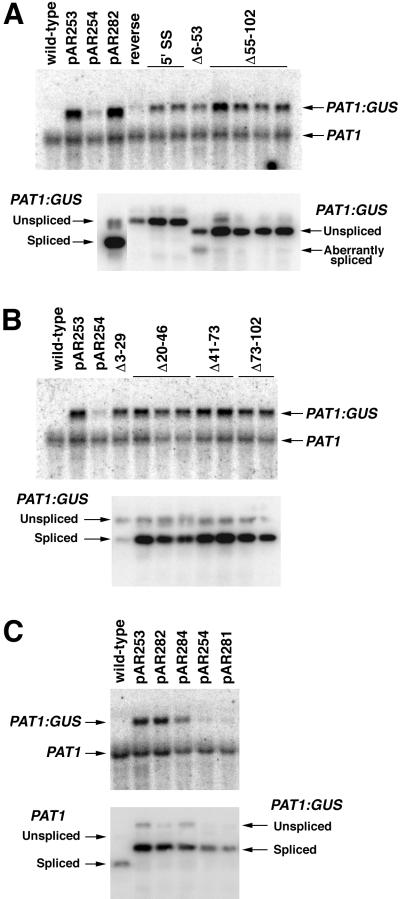Figure 4.
The ability of PAT1 intron 1 and derivatives to stimulate PAT1:GUS mRNA accumulation and to be spliced. Total RNA was subjected to RNA gel-blot hybridization (top panels of A–C) and RT-PCR (bottom panels). Each lane represents an independent single-copy transgenic line, with the RNA and RT-PCR blots for each aligned. The RNA blots were probed with GUS and a PAT1 cDNA spanning exons 4 through 9. The lower panels show gel blots of the RT-PCR products hybridized with an equal mixture of PAT1 exon 1 and exon 2 probes. A, PAT1:GUS fusions containing unspliceable introns. The introns were inverted (reverse), had a point mutation at the 5′ splice site (5′ SS), or were too small to be spliced (Δ6-53 and Δ55-102). B, PAT1:GUS fusions containing spliceable introns. See Figure 3 for deletion details. C, Control PAT1:GUS fusions. The structure of each fusion is shown in Figure 1.

